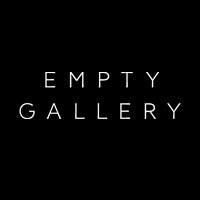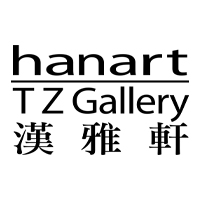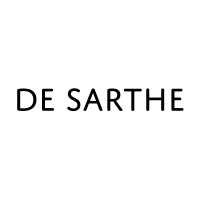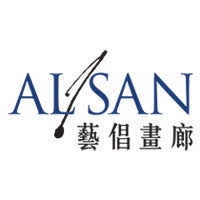Where I Work: Kelly Akashi
By Danielle Shang
Forms of Wonder in Seasons of Chaos

Portrait of KELLY AKASHI in her studio. Photo by Paul Salveson. Courtesy the artist.
Artist, educator, and curator Kelly Sumiko Akashi is well known in Los Angeles for her nimble mind and dexterous hands. A genuinely curious person, she enjoys visiting different places and observing a wide range of plants and creatures. Her mixed-media sculptures, utilizing materials such as glass, wax, bronze, stainless steel, and rope, reflect her biophilia and her interests in physiology and epistemology. Born in Los Angeles in 1983, she is part of a new cohort of artists who are radically reviving the studio glass movement by shifting the focus from craftsmanship toward expanding the medium’s potential for artistic expression.

A cabinet in the studio with objects made or collected by the artist. Photo by Danielle Shang for ArtAsiaPacific.
A visit to Akashi’s studio in September when Covid-19 was still spreading relentlessly in Los Angeles mandated many preventive measures: wearing masks, maintaining social distance, and disinfecting surfaces and hands every few minutes. Despite the dire conditions of the outside world, stepping into the airy studio tucked in the back of a building in the Inglewood neighborhood was like parachuting into a wonderland. There was an intense sense of pleasure mixed with an air of ease about the space. Finely laced murrini glass ellipsoids, biomorphic glass vessels shaped like a space capsule or cannonball jellyfish, and serpentine chandeliers are suspended from the ceiling. Cameras, tools, giant glass flowers, and cast hands occupy the tabletops. Delicate artifacts are on display in cabinets; supplies labeled in Italian and books are stacked high on shelves. Wax-melting stations, boxes, and the remnants of her February show in New York at Tanya Bonakdar Gallery—including the turned-wood pedestals in the pattern of the artist’s echocardiogram and the mold for casting Weep (2020), a large bronze sphere—populate the floor.
Most of Akashi’s physical productions do not take place inside her studio. The artist manipulates chemical and mineral agents in a darkroom, or at a furnace or foundry elsewhere. Instead, her studio is the starting point for her inquiries and a depot between stages of creativity—a thinking pod where her ideas are forged, a laboratory for trial and error, and an editing room for the finishing touches. It also doubles as her office, library, archive, and storage.
It is difficult for Akashi to discard things. She explained that she saves research materials and reclaims leftover pieces from various workshops. She is also a collector of artistic objects, travel souvenirs, and geological specimens. En masse, these curiosities provide a unique glimpse into the cultural conditions of her practice and her perspective on the world. Every five years, she puts her archives in boxes to create time capsules. Like Louise Bourgeois’s microcosmic Cells (1986–2008), comprised of found and sculptural objects arranged inside cages that reflect the artist’s personal memories of trauma and intimacy, Akashi’s seemingly ragtag studio is a representation of her selfhood as it morphs in response to the outside world.

A shelf for storing glass materials in the studio. Photo by Danielle Shang for ArtAsiaPacific.
Around the studio, sculptural replicas of her own hands were ubiquitous, reminding me of Peter Hujar’s images of Paul Thek’s studio as he created casts of his hand and other body parts for the “relics” in his infamous sculpture, The Tomb – Death of a Hippie (1967). Whether the clasped hands of Bourgeois’s sculptures or the grotesquely severed hands made by Thek, hands are surrogates of the artist’s presence. Such is also the case for Akashi, who finds pleasure in making things by hand—tying knots, printing analogue photographs, dipping wax, and sculpting hot glass. The cast of her own hand goes beyond an intimate record of her physical being. The hand that cradles, offers, points at, impresses or hooks things in her works also insinuates the mind behind the authorship, for, as Aristotle believed, “The soul is analogous to the hand; for as the hand is a tool of tools, so the mind is the form of forms and sense the form of sensible things.”
The word “me” appears in many titles of Akashi’s sculptures featuring her hands, such as Eat Me (2016), where bronze hands tug on suspended pieces of rope, and the series Be Me (2016– ), in which her hands hold glass forms. Sitting on the torch station in the center of her studio is Feel Me (Spider) (2020), a rosy pink, translucent hand-blown glass orb in the shape of a balloon cradling a pair of hands cast in bronze. The glass shape embodies a site of introspection: each act of blowing creates a space for the maker’s consciousness to enter and indexes the spirit of its creator. Yet this vessel appears precarious. Long fingernails sink deep into indented notches in the balloon, as if about to deflate it. The wrists on top appear messily severed from the accumulation of wax in the casting process and the left and right hands are in opposite positions so that they evoke a crawling spider.

Feel Me (Spider), 2020, handblown glass, and bronze, 21 × 33 × 24 cm. Photo by Paul Salveson. Courtesy the artist; Francois Ghebaly, Los Angeles; and Tonya Bonakdar, New York.
There was a twin sculpture in aqua blue glass packed away in a box. As Akashi lifted it out of the package to show me, she said from time to time she wished to submerge herself into the blue bubble to find sanctuary from the record-breaking heat waves and the chaos outside her studio. In the middle of a pandemic and social unrest, the balloon that is about to be deflated hints at a fatal collapse of the body itself and the desire to arrest every fleeting moment of existence. It echoes the words of Italian philosopher Franco Berardi about the effects of the pandemic on the human psyche in “Diary of the psycho-deflation” (2020): “For the first time the collapse did not come from financial or strictly economic factors: the crisis comes from the body’s collapse.”
A profound inspiration on Akashi is the provocative sculptor Alina Szapocznikow (1926–73), who often incorporated casts of her own limbs into her creations and regarded the human body as “the only source of all joy, all suffering and all truth.” Fascinated with the passage of time denoted in the body, Akashi began in 1997 to collect her fingernail clippings as evidence of what she calls her own “geology.” She analogizes the human body with the earth, and her practice to a form of geology that investigates the planet’s materials, history, organisms, and evolution. Similar to the conceptual artist Adrian Piper, Akashi occasionally puts her fingernails and hair in her work, as the offering of a piece of the artist.

Tunnel Complex, 2019, red oak, handblown glass, ortho litho prints in walnut artist’s frames, cast led crystal, synthetic hair, onion, 24.5 × 183 × 27.5 cm. Photo by Robert Wedemeyer. Courtesy the artist; Francois Ghebaly Gallery, Los Angeles; and Tanya Bonakdar Gallery, New York.
Guided by the natural world, Akashi sculpts her ethereal glass objects and sensuous candles in nuanced, organic shapes. In her studio, all the objects or works in progress are oval, curvy, anfractuous, geodesic, and most conspicuously, spiral. The spiral is commonly found in nature—in the helix structure of DNA, our inner ear, the path of hurricanes, galaxies, antelope horns, ferns, roses, and particularly seashells. The artist showed me a couple of glass seashells in lustrous colors, as well as translucent black-and-white films with scanned cross-sections of fossilized shells that reveal their internal, spiral chambers. Bourgeois had called the spiral “an attempt at controlling the chaos,” whereas Akashi finds in the forms of a helix—the volute, the Fibonacci sequence, and the whorl—a vocabulary for the universe and for the faculties of harmony, strength, agility, growth, and mobility.
In our conversation, the artist recounted how the glass-blowing community is still dominated by mostly White men and it is difficult for women and artists of color to locate themselves in the canonical narratives. It is clear to Akashi that her practice is not only about pushing the limits of the medium, but also about breaking the community’s own barriers for younger artists. Aside from her own artistic practice, she teaches at ArtCenter College of Design, and occasionally curates exhibitions to expand her intellectual horizons. Recognizing the value of collectivity, she constantly reaches out to her peers to acquire new skills, exchange ideas, collaborate on projects, participate in protests and discussions for social justice, and give support to one another emotionally and politically.
Akashi’s recent work has become increasingly ambitious in scale. It reached a new height when she created a massive bronze cast of her hand overgrown with colossal and vigorously colorful hot-sculpted glass flowers and vines, an installation entitled Cultivator (2020), for Aspen Art Museum. Like those timeless flowers, Akashi is also efflorescing into an artist at her peak.







